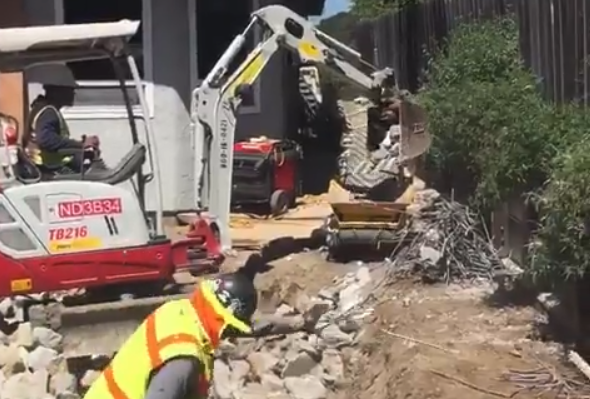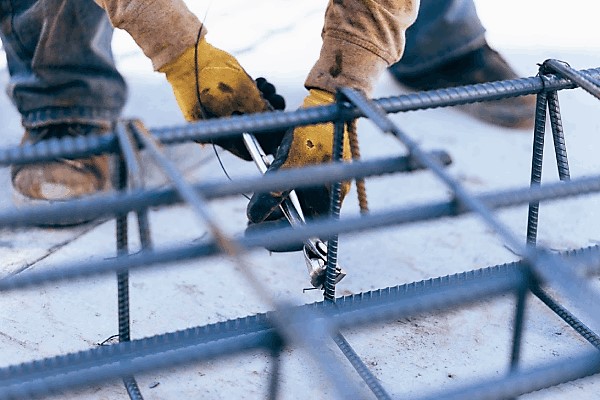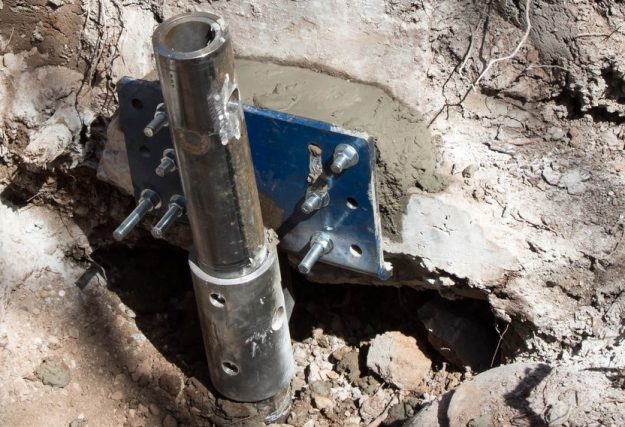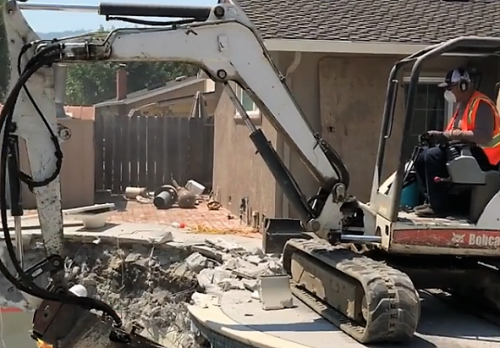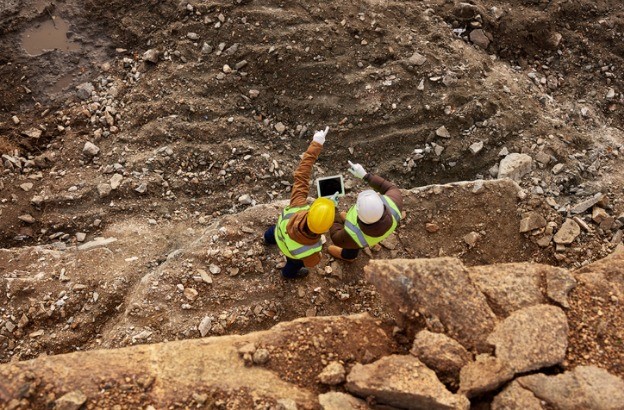When you choose a builder, landscaper or pool company, you also are choosing numerous other sub-contractors that will work in conjunction with the primary contractor you have chosen. This is especially true when heavy excavation or drilling is part of the project. Few contractors do this type of work themselves (in-house) because the equipment investment is very high, and the training needed get it done efficiently and safely make it prohibitive for contractor to do it themselves.
Author: LassiterExcavatingStaff
Installing Pools in Tight Residential Lots
In Northern California many houses sit packed together on small plots. With homes of 2,500 square feet or more sitting on a lot of 5,000 sq. ft. This can present some serious challenges if you’re thinking of installing a nice swimming pool, but it’s certainly not impossible. If you’ve been told a pool can’t be built in your yard there is a good chance the company you are talking with doesn’t want to bother. Or they don’t have people with the expertise to do it.
Tight Home Lots Make for Complex Excavation Work
Continue reading “Installing Pools in Tight Residential Lots”
How Rebar Reinforces Concrete in Construction
The inclusion of reinforcement bars (‘rebar’) in concrete construction is a method that adds long-term strength to the concrete used to build foundations, walls, pools, pads and other structures. Concrete handles compression well, but without rebar would perform less well under tension or torsion (stretching and twisting). Load-bearing structures like foundations or walls need to handle multiple pressures from lateral and horizontal tension, compression and torsion. Rebar works well with concrete because these materials expand and contract at the same rate when temperatures change. Continue reading “How Rebar Reinforces Concrete in Construction”
Using Piers and Piles to Shore Up Sagging Foundations
Pier drilling and pile driving are techniques used for driving pier or piles into the ground underneath a structure to shore up sinking or sagging building foundations, bringing them back to their proper level and preventing further foundation settlement.
Also called “piering,” this method involves the use of strategically placed mechanical jacks to slowly and carefully lift the settled foundation beam to grade. Once raised, the beam is held to elevation by attaching it firmly to the piers.
There are two common types of foundation piers: Continue reading “Using Piers and Piles to Shore Up Sagging Foundations”
Using 4Rs to Manage Our Construction Waste
In the past, it was a common practice during the demolition of buildings or other structures to simply cart the waste materials away to a landfill. Today however, the growing cost of disposal and new materials, has put a greater emphasis on recycling old materials. De-constructing is an approach that involves a more careful disassembly of a structure so that parts of it can be reused or recycled. This has given a whole new face to waste management, one which reduces the amount of materials put into landfills, reduces the demand for precious natural resources and, best of all reduces the cost to the consumer.
The 4R’s of Construction Waste Management
Continue reading “Using 4Rs to Manage Our Construction Waste”
What Influences the Cost to Remove a Pool?
No swimming pool lasts forever. At some point, every in-ground swimming pool built will meet the same fate: Demolition. Oh sure, there will be a few hangers-on like old classic cars, but the majority of pools will be removed at some point. The reasons homeowners remove their pools are too numerous to cover in this article, but once this decision is made the cost discussion begins.
What is Involved with Pool Replacement?
When deciding to convert back yard space from pool to another use, multiple factors influence the cost. Continue reading “What Influences the Cost to Remove a Pool?”
Excavation: Grading a Sloped Construction Site
An experienced builder understands that a sloped building lot presents issues such as stability, varying soil types, possible erosion, and poor drainage which can complicate construction and drive up costs.
The slope of the site might be obvious. If site drops six feet from one end to the other, for instance, you know you may need a deeper foundation on the low side, or a stepped-down foundation. Soil types are less obvious, but unstable soils can require remediation that also makes a site challenging to build on. And we have written previously about the utility of trenching to control water flow. Continue reading “Excavation: Grading a Sloped Construction Site”
The Value of French Drains in Controlling Water Flow
Your property needs to properly drain water to protect your home. Foundations in particular need to be protected from pooling water and seepage. So the property surrounding your structure needs to be engineered to divert water from storms off the property easily.
And you may need to work with your neighbors. If their land stands at a higher elevation than yours, you may receive their water run off. One option in such cases is excavating your property: Digging trenches and installing French drains to divert the water flow away from buildings.
Continue reading “The Value of French Drains in Controlling Water Flow”
Excavating and Drilling in Wet Weather
The Northern California rainy season has begun, and with it come special challenges for construction project crews.
The most common wet weather dangers are “slips, trips and falls.” These dangers are particularly prevalent when working in elevated positions such as when using scaffolding, hand holds, stairs and ladders. Even after the rain stops, conditions remain muddy underfoot for days.
Strong winds create their own hazardous conditions, scattering unsecured materials and putting pressure on scaffolding. Wet and windy weather can also make driving and operating excavation machinery more dangerous due to slick conditions and reduced visibility. Continue reading “Excavating and Drilling in Wet Weather”
How to Winterize Your Home Foundation
With our winter season arriving, as a homeowner you should take some steps to winterize your foundation against the colder, wetter weather. This is not something you should overlook, as the foundation of your home is literally the base for the entire structure which rests upon it, supporting everything inside your home. Here are some tips that will help prepare your home’s foundation for winter. Continue reading “How to Winterize Your Home Foundation”


